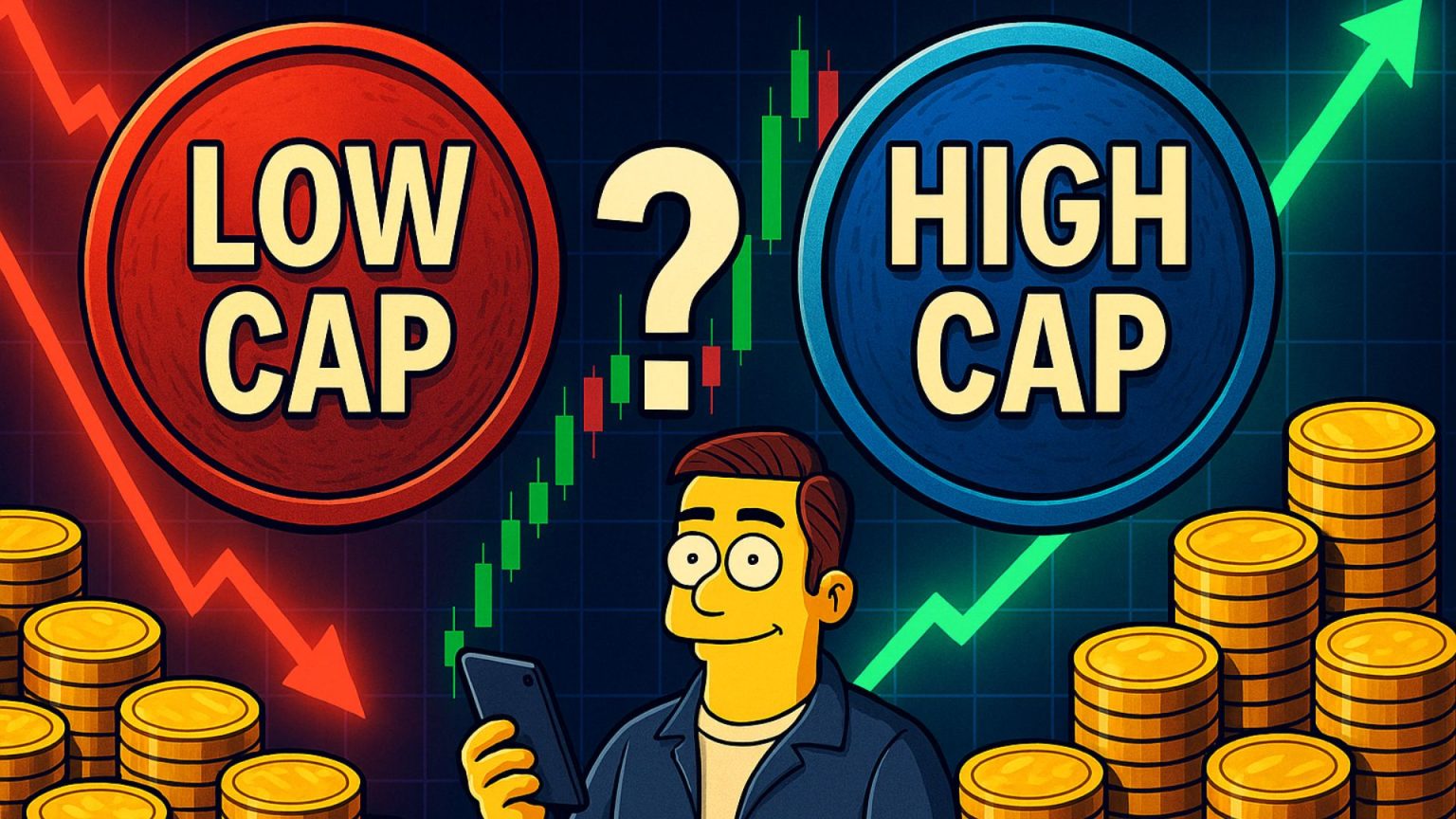Every trader has asked this question:
“Should I focus on big safe projects… or chase low cap coins for higher gains?”
The truth is — there’s no one-size-fits-all answer.
Both low market cap and high market cap crypto projects have their place — but understanding the risk vs reward of each is critical.
In this post, I’ll break down:
- The difference between low cap and high cap crypto
- Pros & cons of trading each
- What to look for in a healthy vs dead project
- And how I approach this strategy inside the EPIQ Trading Floor
📊 What’s The Difference Between Low Cap vs High Cap Crypto?
| Crypto Type | Market Cap Range | Typical Use Case |
|---|---|---|
| High Cap Coins | $1 Billion+ | Long-term stability, safer plays, often Layer 1 or major protocols |
| Mid Cap Coins | $100 Million – $1 Billion | Growth phase, expanding ecosystem, potential big upside |
| Low Cap Coins | Under $100 Million | High-risk high-reward plays, often new or early-stage projects |
🟢 Pros of Trading High Cap Cryptos
(Examples: Bitcoin, Ethereum, Solana, Chainlink)
- Safer and more stable price action
- Strong community & real-world adoption
- Institutional interest & big partnerships
- Higher trading volume (easier to enter/exit positions)
- Stronger support zones in technical analysis
🔴 Cons of Trading High Cap Cryptos
- Slower gains (takes larger moves for big % returns)
- Already priced in by the market to some extent
- Less explosive moves unless driven by major macro events
🟢 Pros of Trading Low Cap Cryptos
(Examples: AERO, AI Tokens, DePIN Projects, New Launches)
- 10x, 50x, even 100x+ potential on hype cycles
- Easier to move price with smaller capital influx
- Early mover advantage before mainstream adoption
- Strong narratives = community-driven pump cycles
🔴 Cons of Trading Low Cap Cryptos
- Extremely high volatility (price can drop 70% overnight)
- Low liquidity (harder to exit large positions)
- More scams, rug pulls, and abandoned projects
- Vulnerable to market dumps and lack of volume
- Short life span if no real use case develops
🧠 How To Tell If A Low Cap Project Has Potential vs It’s Dead
Here’s what I look for BEFORE taking a position on a low cap altcoin:
🚩 Red Flags of a Dead Crypto Project
- Zero volume for weeks/months
- Social media inactive (no posts, no engagement)
- Team has left or rebranded several times
- No updates to website, roadmap, or GitHub
- No partnerships or integrations
- Only pumping based on old news or influencer shills
- Community is silent or complaining about no liquidity
✅ Signs of a Strong Low Cap Crypto Project
- Active development team (GitHub commits, roadmap updates)
- Partnerships with larger crypto protocols or Layer 1s
- Solving a real problem in crypto (DeFi, Gaming, AI, Infrastructure)
- Growing social community (Telegram, Discord, X/Twitter)
- Real volume increase, not just a pump & dump wick
- Strong tokenomics (locked supply, low inflation, incentivized staking)
- Multiple chain integrations or cross-chain narrative
My Approach Inside EPIQ Trading Floor:
Here’s how I trade low caps vs high caps:
| High Cap Strategy | Low Cap Strategy |
|---|---|
| Long-term holds | Swing trade narrative hype cycles |
| Dollar-cost average (DCA) | Monitor volume daily |
| Ladder in/out of positions | Take profit aggressively |
| Use leverage for bigger gains | Avoid leverage (too volatile) |
| Less frequent trades | Fast in, fast out mindset |
🚀 Want Help Finding High Potential Crypto Projects Before They Go Mainstream?
That’s exactly what we do inside the EPIQ Trading Floor.
When you join, you’ll get:
✅ Real-time trade alerts on low cap gems and high cap moves
✅ Volume heatmaps & smart money tracking to catch breakout coins early
✅ Macro dashboards so you know what sectors are rotating in/out
✅ Weekly live calls every Tuesday & Thursday at 8PM EST
✅ Full academy to teach you how to spot dead vs thriving projects
✅ Our entire watchlist of coins we’re watching for 2025 altcoin supercycle
🎯 Start your 3-day free trial now → epiqtradingfloor.com
Learn how to trade like a pro, manage risk smartly, and position yourself for life-changing opportunities — while avoiding the noise.
⚠️ Disclaimer:
This article is for informational purposes only and does not constitute financial advice. Always do your own research and consult a licensed professional before investing or trading cryptocurrency.










Responses